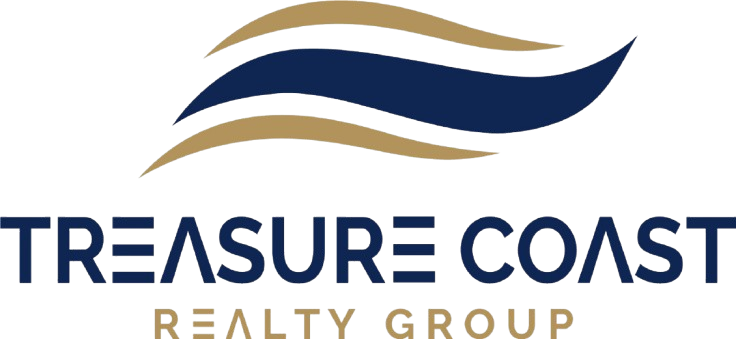
Choosing the right neighborhood is often more important than choosing the right house. While you can renovate a kitchen or add a bedroom, you can’t change your home’s location, school district, or community character. For families, this decision impacts everything from daily routines to long-term financial outcomes and children’s development.
The Neighborhood Selection Framework
Successful neighborhood selection requires balancing multiple factors that matter to your family’s current needs and future goals. Use this systematic approach to evaluate potential areas:
1. Define Your Non-Negotiables
Before touring neighborhoods, establish your must-haves versus nice-to-haves:
Essential Factors Might Include:
- School quality and ratings
- Commute time to work
- Budget constraints
- Safety and crime statistics
- Access to healthcare facilities
Desirable Features Might Include:
- Walking trails and parks
- Shopping and dining options
- Community activities
- Architectural style preferences
- Future development plans
School Districts: The Foundation of Family Neighborhoods
For families with children, school quality often drives neighborhood decisions. Research goes beyond test scores and ratings:
Academic Performance Metrics
- Standardized test scores compared to state averages
- Graduation rates and college acceptance statistics
- Advanced Placement course availability and participation
- Student-teacher ratios and class sizes
- Special programs for gifted, special needs, or English language learners
School Culture and Environment
- Parent involvement levels and PTA activity
- Extracurricular activities including sports, arts, and clubs
- Discipline policies and school safety measures
- Teacher tenure and experience levels
- Recent awards or recognition the school has received
Future Considerations
- Boundary changes that might affect school assignments
- New school construction or consolidation plans
- Enrollment trends and capacity issues
- Bond measures for facility improvements
Research Tools:
- GreatSchools.org for ratings and reviews
- State Department of Education websites for detailed statistics
- Local school district websites for boundary maps and policies
- Parent Facebook groups for insider perspectives
Safety and Security Assessment
Family safety extends beyond crime statistics to include traffic patterns, emergency services, and community vigilance.
Crime and Safety Data
- Violent crime rates compared to county and state averages
- Property crime trends over the past 3-5 years
- Police response times and local station proximity
- Neighborhood watch programs and community involvement
- Street lighting and visibility after dark
Traffic and Pedestrian Safety
- School zone traffic patterns during drop-off and pickup
- Sidewalk connectivity and pedestrian infrastructure
- Speed limits and traffic calming measures
- Bike lanes and safe cycling routes
- Public transportation safety and accessibility
Research Methods:
- Local police department crime mapping tools
- Neighborhood watch group websites and social media
- Walking the area at different times of day and week
- Speaking with current residents about their experiences
Lifestyle and Community Fit
The best neighborhoods align with your family’s lifestyle preferences and values.
Community Character
- Demographics that match your family’s diversity preferences
- Age distribution of residents (young families vs. retirees)
- Community events and neighborhood traditions
- Local politics and civic engagement levels
- Religious and cultural institutions that matter to your family
Recreation and Activities
- Parks and playgrounds within walking or short driving distance
- Sports leagues and youth activities
- Library quality and programming for children
- Community centers with family-friendly facilities
- Swimming pools, tennis courts, and other amenities
Shopping and Services
- Grocery stores and everyday shopping convenience
- Restaurants and entertainment suitable for families
- Healthcare providers including pediatricians and urgent care
- Service providers like dry cleaning, banking, and pharmacies
Commute and Transportation Considerations
Your daily commute affects family time, stress levels, and long-term satisfaction with your neighborhood choice.
Work Commute Analysis
- Drive times during actual commute hours (not just Google Maps estimates)
- Traffic patterns and congestion points
- Alternative routes available during construction or accidents
- Public transportation options and reliability
- Remote work flexibility that might reduce commute importance
Family Transportation Needs
- School bus availability and pickup locations
- Activity transportation to sports, music lessons, and playdates
- Airport access for family travel
- Teen driving considerations for high school students
Financial Factors and Future Value
Neighborhood selection significantly impacts both your current budget and future investment returns.
Current Costs
- Home prices compared to your budget and financing
- Property taxes and assessment trends
- HOA fees and special assessments
- Utility costs including water, electric, and waste management
- Private school costs if public schools don’t meet your needs
Investment Potential
- Property appreciation trends over the past 5-10 years
- New development that might affect property values
- Infrastructure improvements planned or in progress
- Economic development attracting employers to the area
- Supply and demand dynamics affecting long-term values
Age-Specific Considerations
Different life stages require different neighborhood features:
Families with Young Children (0-5)
- Playgrounds and tot lots within walking distance
- Preschool and daycare options
- Pediatric healthcare providers
- Safe streets for stroller walks
- Other families with similar-age children
Elementary School Age (6-12)
- High-quality elementary schools with strong reputations
- After-school programs and childcare options
- Youth sports leagues and activities
- Library programs for children
- Bike-friendly streets and paths
Teen and High School Age (13-18)
- Strong high school academic and extracurricular programs
- Safe places for teens to gather and socialize
- Jobs and volunteer opportunities for teenagers
- College preparatory resources
- Public transportation for increasing independence
The Treasure Coast Family Advantage
Our local market offers unique considerations for families:
Climate and Outdoor Living
- Year-round outdoor activities and sports participation
- Beach access for family recreation and exercise
- Boating communities with marina access
- Hurricane preparedness and evacuation routes
Seasonal Population Changes
- Winter resident impact on schools and traffic
- Summer activity availability when snowbirds leave
- Tourist season effects on local businesses and traffic patterns
The Neighborhood Research Process
Phase 1: Online Research (1-2 weeks)
- Review school ratings and demographics
- Analyze crime statistics and safety data
- Research property values and market trends
- Join local Facebook groups and online forums
Phase 2: Drive-Through Exploration (1 week)
- Visit during different times of day and week
- Observe traffic patterns and noise levels
- Note maintenance of homes and common areas
- Identify nearby amenities and services
Phase 3: Deep Dive Investigation (2-3 weeks)
- Walk the neighborhoods extensively
- Talk to current residents about their experiences
- Visit schools and community centers
- Attend local government meetings or community events
Phase 4: Final Evaluation (1 week)
- Create comparison charts for top 2-3 neighborhoods
- Review budget implications and financing options
- Consider family member input and preferences
- Make final decision based on weighted priorities
Red Flags to Avoid
Some warning signs indicate neighborhoods that might not meet family needs:
- Declining enrollment in local schools
- High turnover of residents and homes frequently for sale
- Deferred maintenance of common areas and infrastructure
- Limited retail and service options requiring long drives
- Zoning changes that might bring incompatible development
- Traffic issues with no improvement plans
- Special assessments for major infrastructure repairs
Making the Final Decision
When comparing final neighborhood candidates, consider:
The 5-Year Test
Where do you see your family in five years, and which neighborhood best supports those goals?
The Gut Check
After all the research, which neighborhood feels like home when you’re there?
The Investment Perspective
Which area offers the best combination of lifestyle and financial return?
Your Next Steps
Choosing the right neighborhood requires patience, research, and often some compromise. Start your search early, involve family members in age-appropriate ways, and remember that the perfect neighborhood is the one that best fits your unique family’s needs and priorities.
The investment in thorough neighborhood research pays dividends for years to come through better schools, stronger community connections, improved quality of life, and better financial outcomes.
Ready to find the perfect neighborhood for your family in the Treasure Coast area? Our local experts can provide insider knowledge about schools, communities, and market trends to help you make the best decision for your family’s future.
